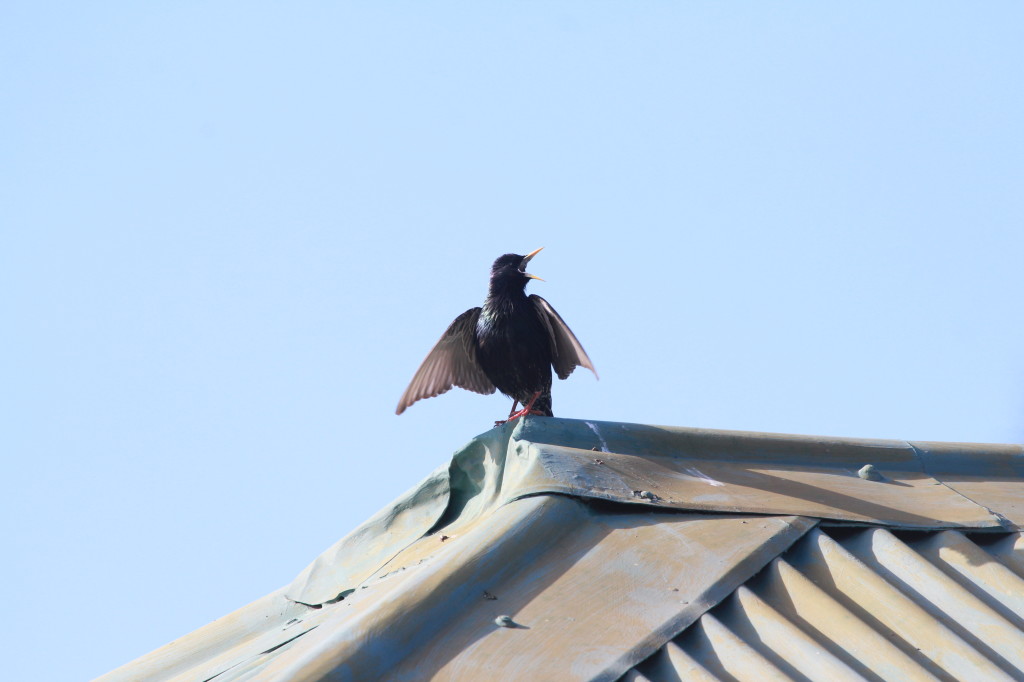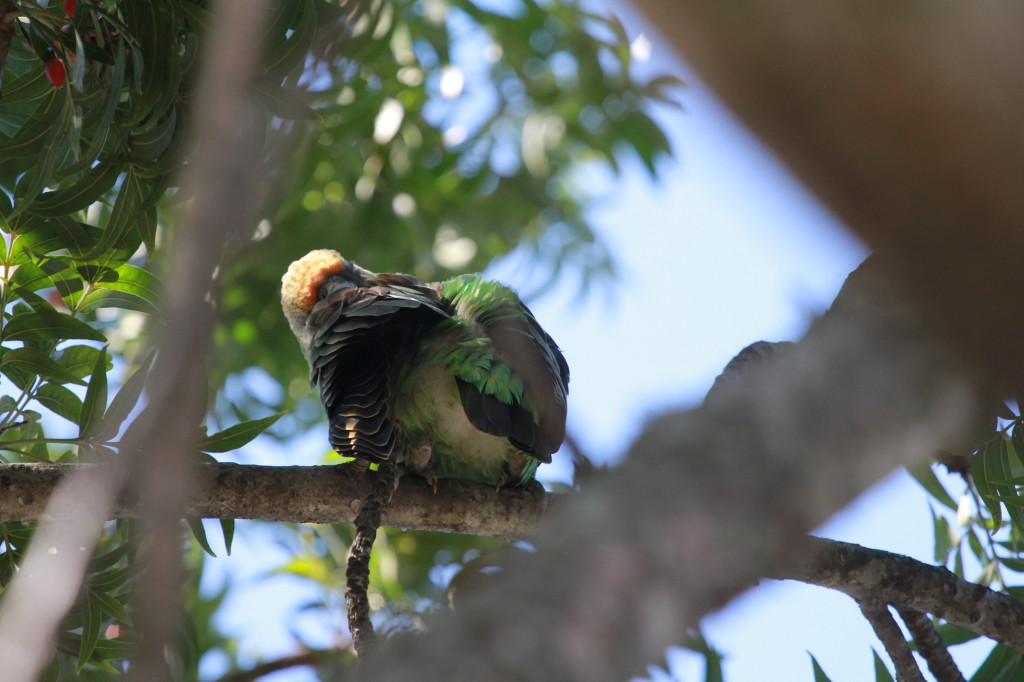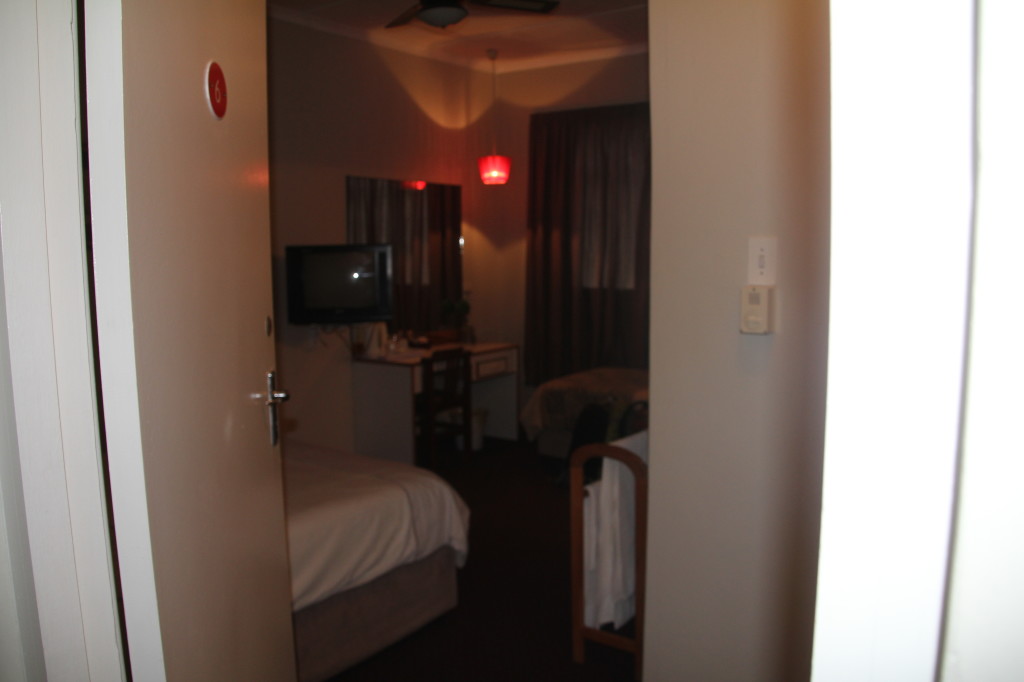Most of my glimpses of wild birds, especially parrots is a bird flying at the speed of light over my head or hiding in trees. I never imagined that I would get to spend a few quality HOURS with this beautiful little family of Cape Parrots! They are part of the flock who live & breed in Hogsback and fly down to King William’s Town during the day to forage. Much to my surprise, they don’t make a lot of noise. Since my eyesight is terrible and I rely on sound and then movement to find a bird I would have missed them completely without the help of Rodnick Biljon who is part of the Cape Parrot Project and monitors the activities of the local birds.

Rodnick with my husband, Ina

Typical street with fruit trees that attract the parrots

You can see the fruit that they are eating in this tree.
All the photos taken in this tree are of the same 3 birds. The father (adult male) is the one with the red forehead and red shoulders. The mother (adult female) has a dull grey-ish brown head but she still has the red shoulders. The youngster has an orange-ish forehead and no red on the shoulders. If you are particularly “tuned in” to birds, you can also see he has this wide-eyed, innocent look about him but also an air of “wow, what a cool world”! It’s hard to explain, maybe you just need to see them for yourselves. Even before Rodnick explained the colouration of the adult and juvenile birds, I had picked the youngster out by his behaviour. He was a bit more awkward in moving about the tree while the parents are agile and graceful, they know what they are doing. A couple times he went for a branch, missed and had to scramble to get his balance…………then he looked kind of embarrassed that I had witnessed his blooper!
All 3 birds were eating the berries and at times the two adults would snuggle and preen each other or one of them would preen the baby or feed him, though he was quite capable of feeding himself. They tended to stick together, never more than a meter or so apart. I was so touched by the affection shown between the family members!
































I think this is the part where we drove around the area after seeing a few other Cape Parrots fly past. We saw other birds foraging alongside the parrots, everyone seemed to get along just fine.







Now we are back to “my” Cape Parrot family again. I couldn’t believe they were still there!




Here’s the youngster trying to fly from one branch to another a bit awkwardly.
They all spent quite a bit of time preening. Guess they wanted to look their best for the blog!



















 I have seen 1000’s of birds all over the world, some of which are rare and endangered like these Cape Parrots. But that isn’t why I remember these guys and treasure the time I spend with them. It’s because they let me in. They didn’t mind sharing their private lives with me for a few hours and somehow they knew they were safe with me. I do hope they realize that not all humans are as well-meaning as people like Rodnick, Ina & myself. Some people would try to harm them or capture them so I hope they learn to keep a safe distance from humans. I was at times close to 4 meters below them. I hope they stay safe and the youngster grows up to be a happy, healthy parent of the next generation!
I have seen 1000’s of birds all over the world, some of which are rare and endangered like these Cape Parrots. But that isn’t why I remember these guys and treasure the time I spend with them. It’s because they let me in. They didn’t mind sharing their private lives with me for a few hours and somehow they knew they were safe with me. I do hope they realize that not all humans are as well-meaning as people like Rodnick, Ina & myself. Some people would try to harm them or capture them so I hope they learn to keep a safe distance from humans. I was at times close to 4 meters below them. I hope they stay safe and the youngster grows up to be a happy, healthy parent of the next generation!









































































































